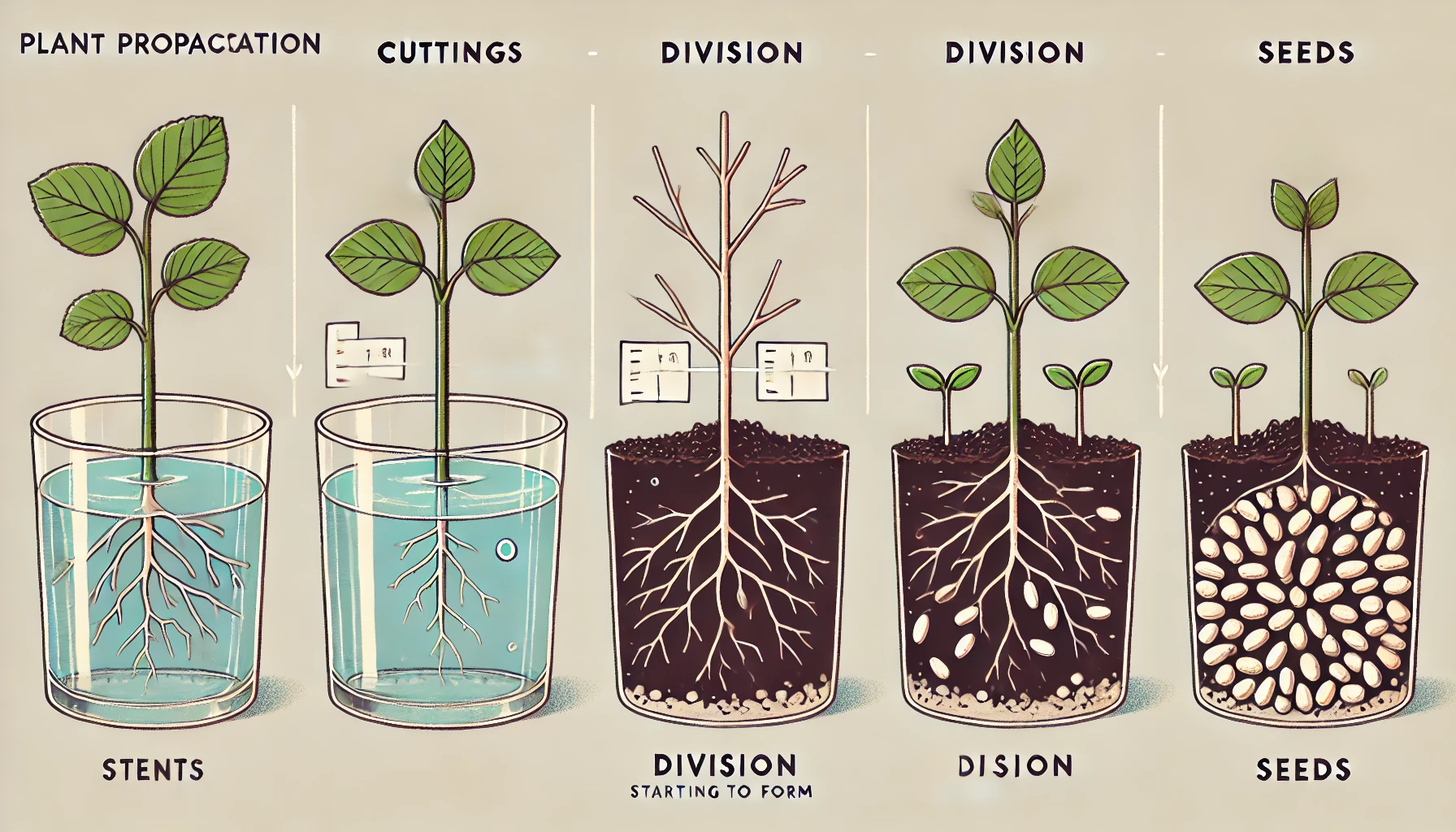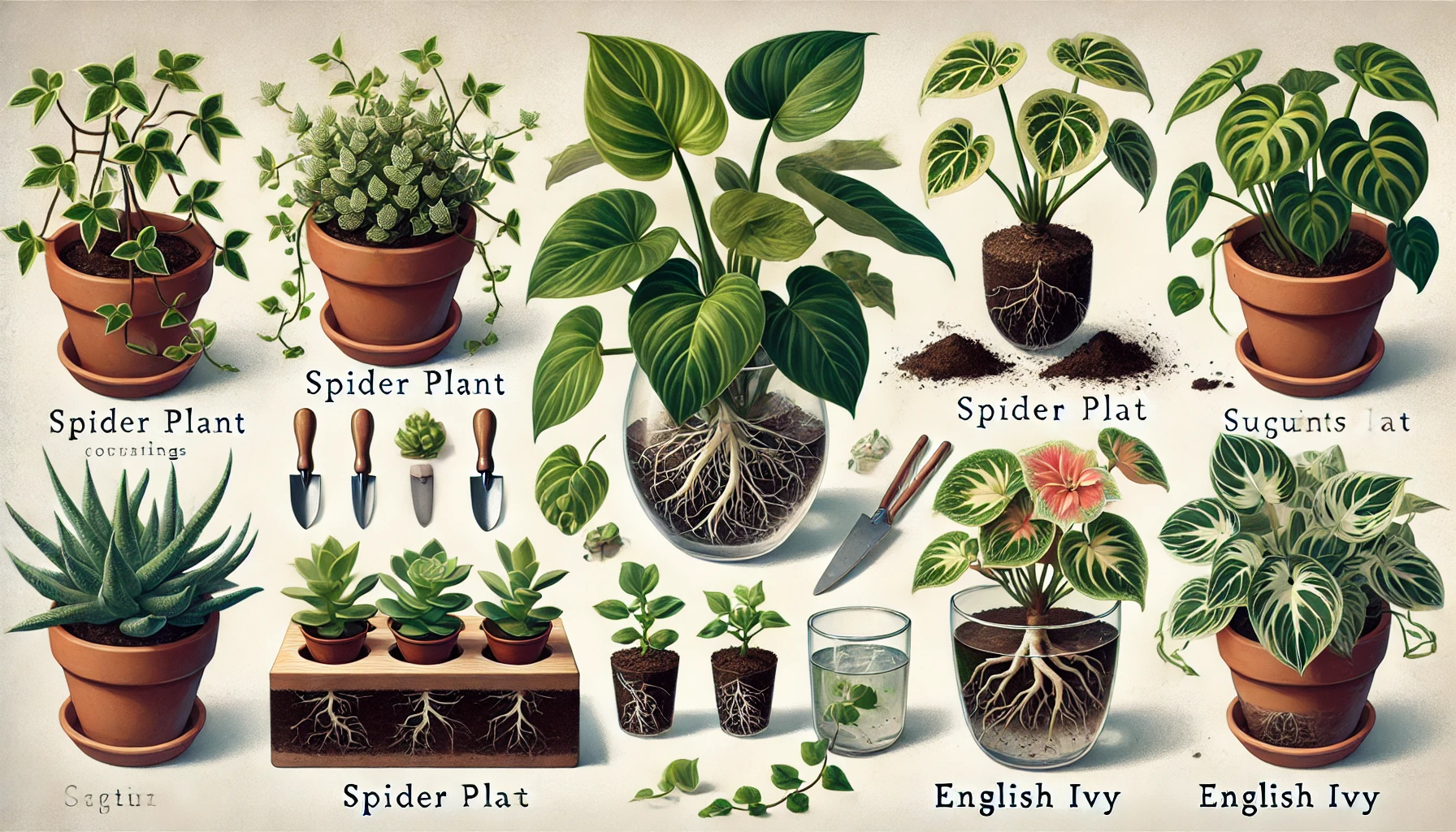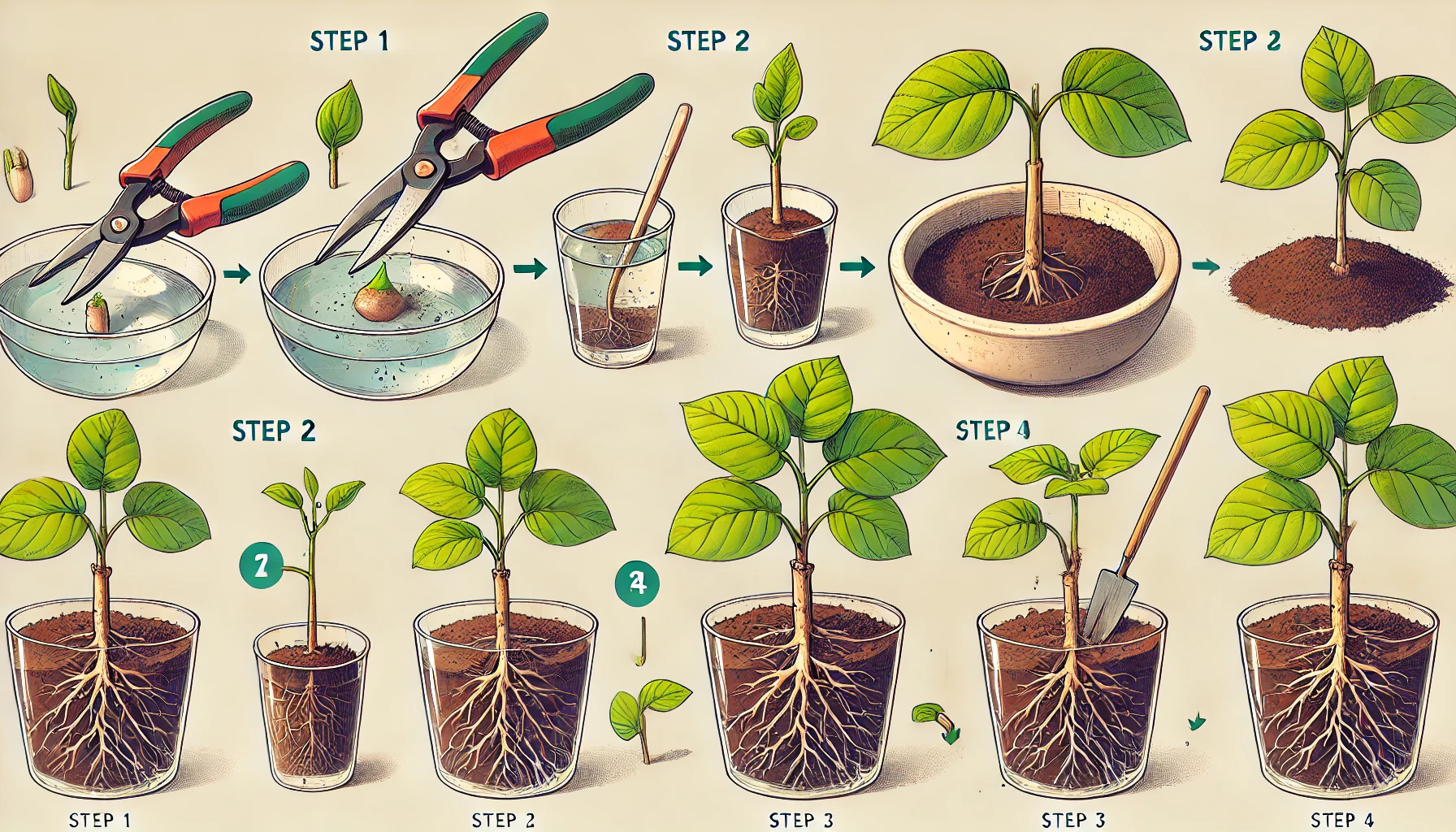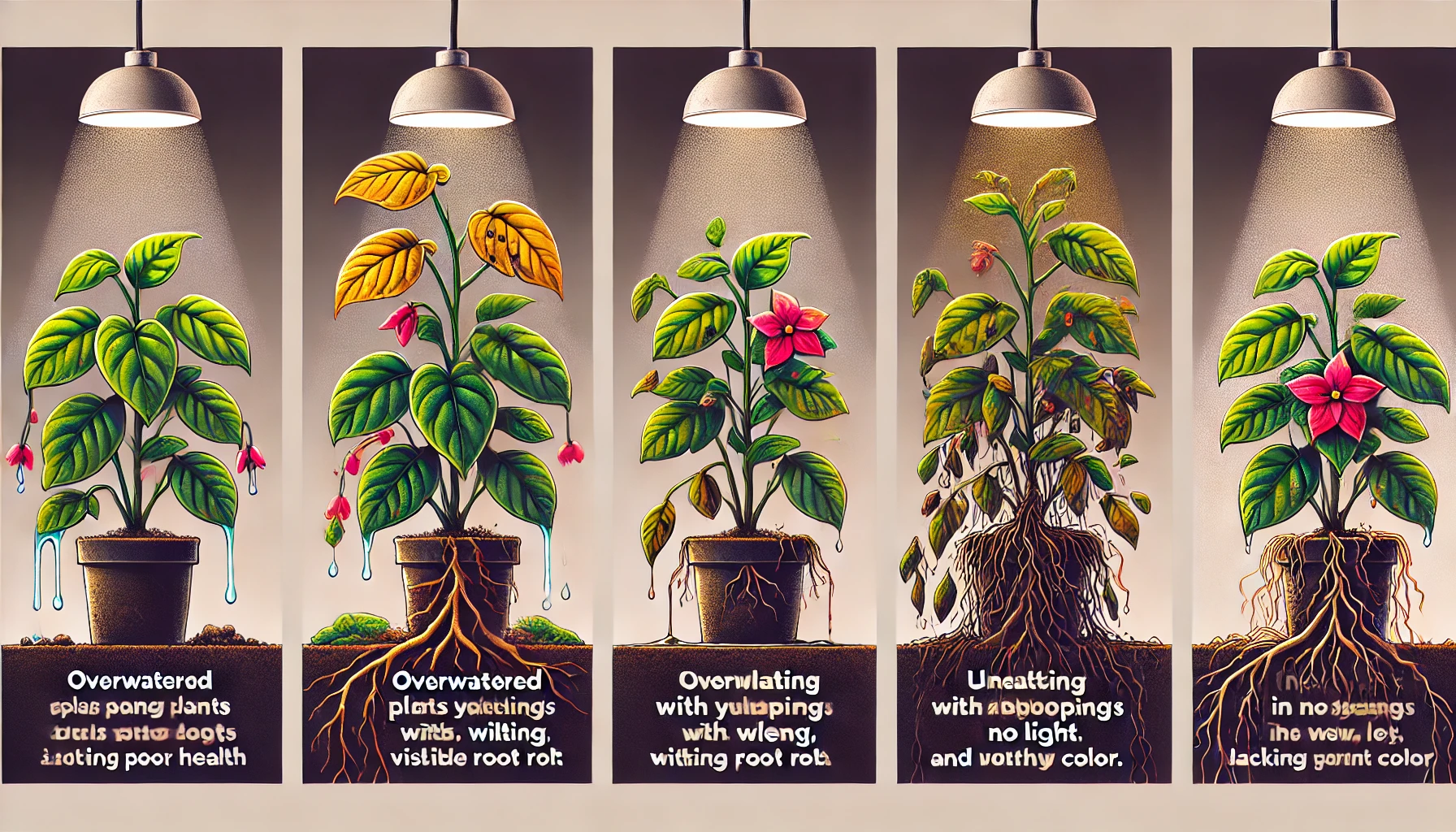
Beginner-Friendly Plants to Propagate: Easy Plants for First-Time Gardeners
Starting your gardening journey can feel overwhelming, but propagating plants doesn’t have to be complicated! If you’re a first-time gardener, the best way to build confidence is by working with beginner-friendly plants to propagate. These plants are not only forgiving but also offer quick results, making them perfect for anyone new to plant propagation. In this article, we’ll introduce you to some of the easiest plants to propagate, giving you a step-by-step guide to growing your plant collection and boosting your gardening success from the very start. Let’s dive into the world of simple and rewarding propagation!
Table of Contents
ToggleWhat Is Plant Propagation and Why Is It Perfect for Beginners?
Plant propagation is the process of creating new plants from existing ones. This can be done in several ways, such as through seeds, cuttings, or division. It’s a fantastic method for expanding your garden without spending money on new plants. Plus, it’s a great way to preserve your favorite plants!

Why Is Plant Propagation Perfect for Beginners?
- Easy to Learn
Plant propagation doesn’t require complex tools or advanced skills, making it ideal for beginners. Most methods, like taking cuttings, are simple and can be done at home with just a few basic supplies.
- Cost-Effective
Instead of purchasing new plants, you can propagate existing ones. This is a budget-friendly way to grow your garden, especially for plants you love and want to replicate.
- Builds Confidence
As you watch your propagated plants grow, you’ll gain confidence in your gardening skills. The process is rewarding and helps beginners understand how plants grow and thrive.
- A Fun and Educational Hobby
Propagating plants allows you to learn about different species and their care needs. It’s a fun, hands-on way to get closer to nature and develop a deeper appreciation for gardening.
Benefits of Plant Propagation 
- Increased Plant Variety: Propagate various types of plants and experiment with different techniques.
- Stronger Plants: Propagated plants often adapt well to their environment, making them resilient and strong.
- Personal Satisfaction: There’s something truly rewarding about growing a new plant from scratch.
Plant propagation is a perfect introduction to the world of gardening. It’s simple, affordable, and offers endless possibilities for beginners eager to grow their plant collection!
Top 5 Beginner-Friendly Plants to Propagate 

Starting with easy-to-propagate plants ensures your success and boosts your confidence as you begin your gardening journey. Here are the top 5 beginner-friendly plants that are simple to propagate and grow with minimal effort:

1. Pothos (Epipremnum aureum) 
Pothos is one of the easiest plants to propagate! This low-maintenance vine grows quickly and can thrive in almost any condition. Simply cut a healthy stem below a leaf node, place it in water, and watch the roots develop within a couple of weeks. It’s perfect for beginners who want to add greenery to their space with minimal fuss.
2. Spider Plant (Chlorophytum comosum) 
Spider plants are known for producing “babies” or offshoots that can be easily propagated. Just cut a baby plant from the mother plant, place it in water or soil, and within a few weeks, you’ll have a new plant. They’re forgiving, making them perfect for anyone just starting out.
3. Succulents (Various species) 
Succulents, such as jade plants and echeveria, are perfect for beginners due to their low water needs. To propagate, simply cut a leaf or stem, let it callous over for a day, then plant it in soil. With a little patience, you’ll see roots forming and new growth appearing.
4. English Ivy (Hedera helix) 
English Ivy is not only beautiful but also easy to propagate through cuttings. Snip a healthy vine, place it in water until roots form, and then transfer it to soil. It’s a fast grower and perfect for those who want a low-maintenance plant that spreads easily.
5. Coleus (Plectranthus scutellarioides) 
Coleus offers vibrant colors and is a fantastic plant for beginners. It propagates easily through stem cuttings. Simply cut a healthy stem, place it in water, and watch it root within 7-10 days. Once it’s established, you can plant it in the garden or a pot for continued growth.
These five plants are not only easy to propagate but also rewarding to grow. Start with these and watch your garden flourish!
Step-by-Step Guide to Propagating Your First Plants 
Propagating plants can be a rewarding experience, allowing you to grow new plants from cuttings or seeds. Follow this simple step-by-step guide to successfully propagate your first plants and watch your garden expand.

1. Choose the Right Plant for Propagation 
Start with easy-to-propagate plants like succulents, pothos, or spider plants. These are beginner-friendly and grow well from cuttings. Ensure the plant you select has healthy stems or leaves.
2. Gather Your Supplies 
You’ll need:
- Sharp scissors or pruning shears
- A clean container or jar for water
- A rooting medium (like soil, sand, or perlite)
- Rooting hormone (optional)
3. Take a Cutting 
Select a healthy stem or leaf and cut just below a leaf node (the spot where leaves sprout). For stem cuttings, ensure the cutting is around 4-6 inches long. Remove any lower leaves to expose the node where roots will form.
4. Rooting the Cutting 
Place your cutting in water or soil, depending on your preferred method.
- Water method: Submerge the cutting’s node in water, ensuring the leaves stay above the surface.
- Soil method: Insert the cutting into a pot with moist soil, covering the node and leaving the top exposed.
5. Provide the Right Conditions 
Place the cutting in a bright, indirect light spot. Keep the environment warm and humid, which encourages root growth. If needed, cover the cutting with a plastic bag to maintain humidity.
6. Wait for Roots to Develop 
Roots will begin to form in 2-4 weeks. If you’re using the water method, change the water every few days to keep it clean. Once the roots are about 1-2 inches long, your cutting is ready for transplanting.
7. Transplant to a Larger Pot 
Once your cutting has developed a strong root system, it’s time to move it to a larger pot with well-draining soil. Make a hole in the soil, gently place the cutting, and cover the roots with soil. Water it well to settle the soil.
8. Ongoing Care 
Continue caring for your new plant by providing regular watering, appropriate light, and occasional fertilizing. Soon, you’ll have a thriving new plant!
By following these simple steps, you’ll master the art of plant propagation and enjoy a lush, growing garden!
Common Mistakes to Avoid When Propagating Plants 
Propagating plants can be a rewarding experience, but even experienced gardeners can make mistakes. To ensure your propagation efforts are successful, here are some common pitfalls to avoid:
1. Using Poor Quality Cuttings 
One of the most common mistakes is starting with unhealthy or weak cuttings. Always choose healthy stems with no signs of disease or damage. Look for firm, young growth that’s free from pests.
2. Incorrect Watering 
Overwatering or underwatering your cuttings can lead to rot or dehydration. Be sure to keep the soil moist but not soggy. A well-draining pot or container is essential to prevent waterlogging.
3. Lack of Proper Light 
Plants need the right amount of light to root properly. Too much direct sunlight can burn delicate cuttings, while too little can slow root development. Place your cuttings in bright, indirect light for optimal results.

4. Wrong Soil or Medium 
Using the wrong growing medium can hinder root growth. Avoid regular garden soil, as it can be too heavy and compact. Opt for a lightweight, well-draining mix like perlite, sand, or a propagation-specific soil.
5. Not Monitoring Humidity 
Cuttings often need higher humidity to thrive. Failing to maintain this can cause the cuttings to dry out. Use a humidity dome or a clear plastic bag to create a mini greenhouse effect, but ensure it’s ventilated to prevent mold.
6. Transplanting Too Soon 
Transplanting cuttings too early can shock the roots and stunt their growth. Wait until the cuttings have well-established roots before moving them to their final spot. Patience is key!
7. Ignoring Rooting Hormones 
While not always necessary, using rooting hormones can speed up the process and improve success rates. If you’re struggling with root development, consider applying a rooting hormone to your cuttings for better results.
By avoiding these common mistakes, you’ll increase your chances of successful plant propagation and enjoy healthier, more robust plants. Happy propagating!
Troubleshooting: What to Do If Your Plant Cuttings Aren’t Rooting 

Sometimes, despite your best efforts, plant cuttings may not root as expected. Don’t worry! Here are some common reasons why your cuttings may be struggling, and tips on how to fix them:
1. Too Much or Too Little Water 
If the rooting medium is too dry or too soggy, it can prevent roots from forming. Keep the soil or water medium moist but not waterlogged. If using water propagation, change the water every few days to prevent stagnation.
2. Improper Temperature 
Cuttings need warmth to root. If it’s too cold, the roots may not develop. Ensure your cuttings are in a warm spot, ideally between 65°F-75°F (18°C-24°C). You can use a heat mat to maintain the right temperature for faster rooting.
3. Lack of Humidity 
Cuttings often struggle to root if the humidity is too low. To increase humidity, cover the cuttings with a plastic dome, bag, or use a humidity tray. This helps retain moisture around the cutting, encouraging root development.

4. Using the Wrong Type of Cutting 
Not all plant cuttings root equally well. Ensure you’re using the right part of the plant. Softwood cuttings work best for many species, while others may require semi-hardwood or hardwood cuttings. Research your plant to know the best cutting type.
5. Incorrect Cutting Method 
Make sure you’re cutting just below a node (the part of the stem where leaves or branches grow). This is where roots are most likely to form. Avoid cutting too much of the stem or using very old, woody parts, as they are less likely to root.
6. Insufficient Rooting Hormone 
Rooting hormones can speed up the process of root development. If your cuttings are not rooting, try dipping the cut ends in rooting hormone before planting. This helps stimulate root growth, especially for tougher plants.
By addressing these common issues, you’ll increase your chances of success and watch your cuttings grow into healthy plants!
Final Thought

Congratulations on taking the first step toward becoming a plant propagation pro! 

Whether you’ve successfully rooted your first Pothos cutting or are just starting out with your Spider Plant, keep experimenting and learning. As you gain experience, you’ll become more in tune with your plants and develop a deeper understanding of their needs.
So, grab your scissors, pick your favorite plant, and start propagating today! Happy gardening! 
Frequently Asked Questions(FAQ)
What are the best beginner-friendly plants to propagate?
Some of the best plants for beginners to propagate include pothos, spider plants, succulents (like jade plants), coleus, and begonias. These plants root easily and are forgiving, making them ideal for those new to plant propagation.
How long does it take for cuttings to root?
The time it takes for cuttings to root varies by plant species and environmental conditions, but most cuttings can start to root in 2 to 4 weeks. Plants like pothos and coleus are relatively fast, while others, like succulents, may take a little longer.
Can I propagate plants from leaves only?
Yes, many plants can be propagated from leaves. For example, succulents like jade plants, African violets, and begonias can all be propagated from leaf cuttings. However, some plants may require stem cuttings for better success.
How do I know if my cutting is ready to be potted?
You’ll know your cutting is ready for potting when it has developed strong roots, typically 1-2 inches long. Gently tugging on the cutting can also help; if it resists, it means the roots have established.
Do I need special equipment to propagate plants?
No, you don’t need special equipment to propagate plants. Most plants can be propagated using simple tools like a sharp knife or scissors, a container with water or soil, and some rooting hormone (optional). A clean environment is essential to prevent disease.
What conditions do beginner-friendly plants need to thrive during propagation?
Beginner-friendly plants generally thrive in bright, indirect light, with moderate humidity and warmth. Make sure the soil or water stays moist but not soaked, and avoid direct sunlight, which can scorch young cuttings.
Can I propagate plants in water or should I use soil?
Both methods are effective, but water propagation is often simpler for beginners. Many plants, like pothos and coleus, root well in water. However, some plants, like succulents, do better when propagated directly in soil.
How often should I change the water when propagating in water?
If you’re propagating in water, change the water every 3-5 days to keep it clean and free from bacteria. This ensures healthy root growth and prevents the development of rot.


